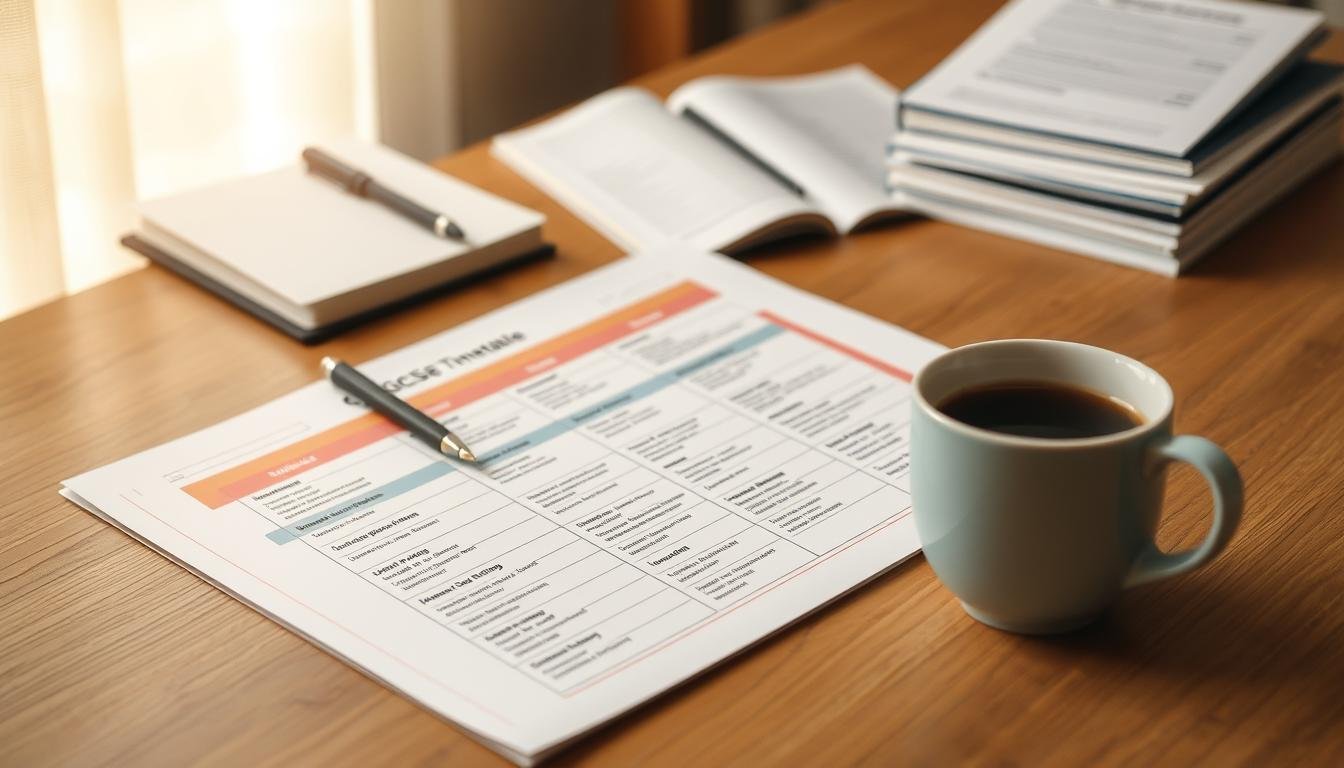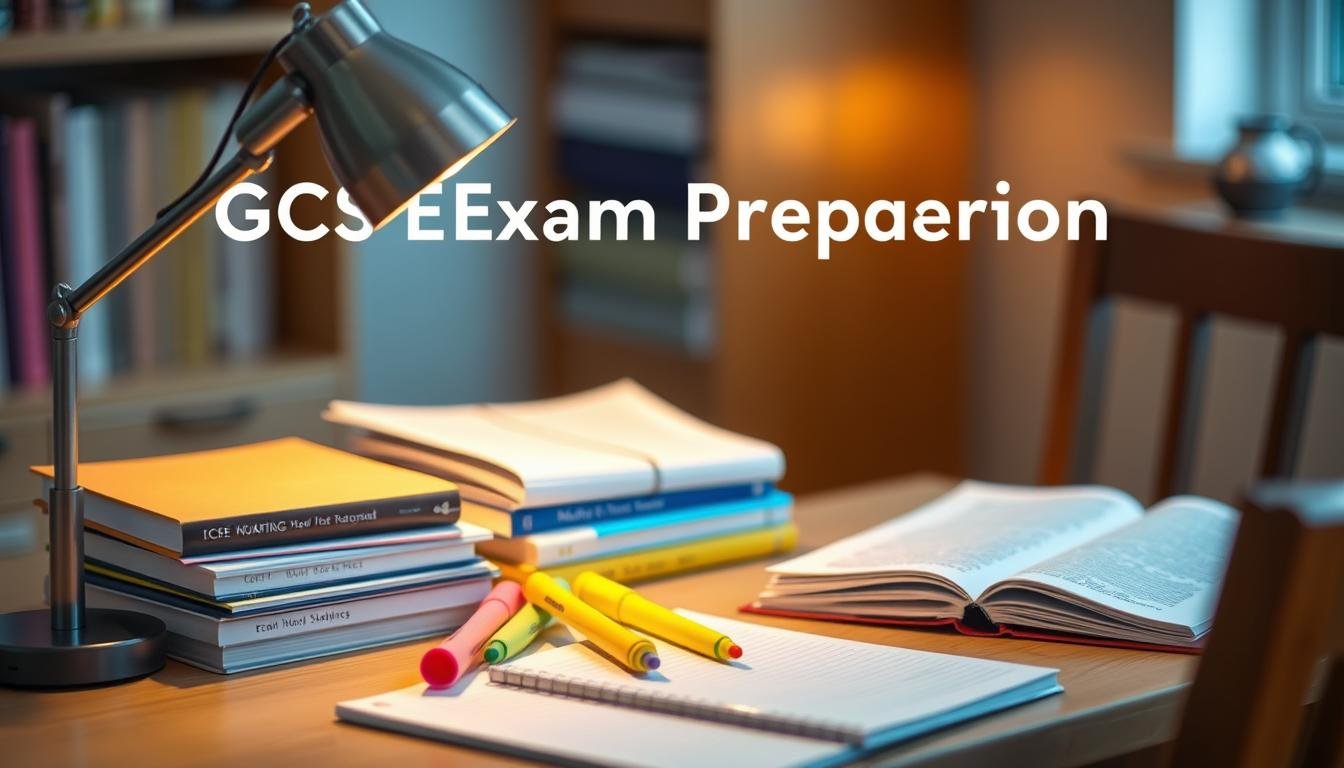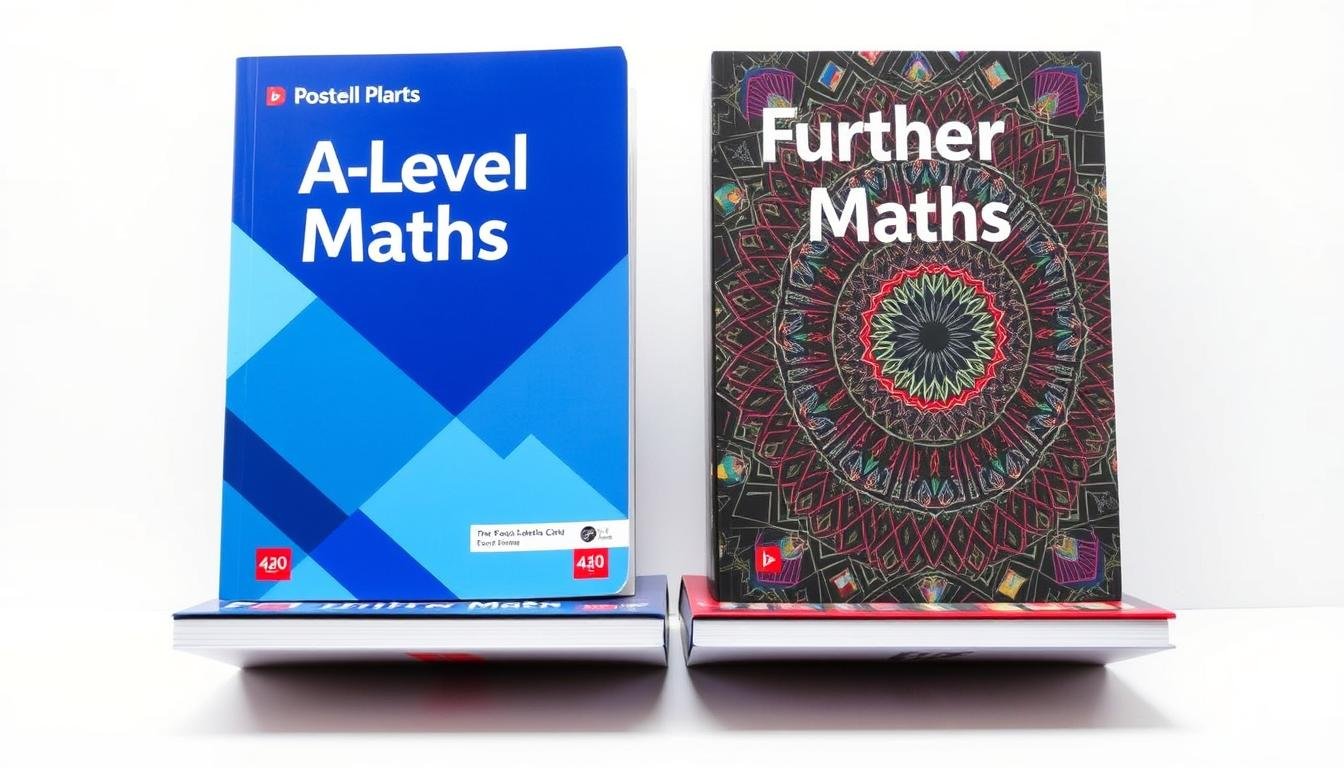Struggling to keep up with your study schedule for GCSE and A-Level exams? A well-organised revision timetable can make a big difference. Students like Jacintha and Rohan say a tailored study plan keeps them focused and helps them reach their goals.
To make a good gcse revision timetable or a-level revision planning strategy, you need to know your study needs. This way, you can pace yourself right and make sure you’re ready for your exams.
Key Takeaways
- Understand the importance of a personalised revision timetable for GCSE and A-Level exams.
- Learn how to identify your study needs and create an effective study plan.
- Discover tips for staying on track with your revision schedule.
- Find out how a well-planned revision timetable can boost your confidence.
- Explore strategies for adjusting your timetable as needed.
Understanding the Importance of Structured Revision
Creating a structured revision plan is key for students to do well in GCSE and A-level exams. A good study schedule keeps students organized and focused. It makes sure they cover all the important material before the exams.
Students have different ways of organizing their revision. Some say to tackle the toughest subjects last to build confidence. Others suggest revising in the order of the exam schedule to reduce stress. Also, giving each subject equal time ensures thorough coverage.
“A well-organized study schedule is the backbone of successful exam preparation for students.”
By having a structured revision plan, you can use your study time wisely. This means setting clear goals, prioritizing tasks, and checking your progress often. A well-planned study timetable helps you stay on track, manage your time well, and get better grades in your exams.
How to Create a Revision Timetable for GCSE & A-Level

To do well in your GCSE and A-Level exams, making a good revision timetable is key. A well-organised plan helps you use your time wisely. This ensures you cover all the important topics before the exams.
First, list the subjects you need to work on and set times for each. It’s important to be realistic about your time and leave some extra for surprises.
Key Steps to Creating a Revision Timetable:
- List all the subjects you need to revise.
- Allocate specific times for each subject, considering your strengths and weaknesses.
- Break down your study sessions into manageable chunks, using techniques like the Pomodoro Technique.
The Pomodoro Technique for GCSE and A-Level Revision
The Pomodoro Technique is about working in focused, 25-minute blocks, then taking a 5-minute break. It helps you stay focused and remember things better. For example, Rohan found 20-minute chunks with 5-minute breaks worked for him, while Shay preferred 30-minute study sessions with 5-minute breaks.
“The key to successful revision is not just about the amount of time you spend studying, but how effectively you use that time.”
Using the Pomodoro Technique in your revision plan can boost your productivity. The aim is to make a timetable that is balanced and realistic. This way, you can stick to it and do well.
Tools and Templates for Effective Revision Planning

Improving your revision planning is easier with the right tools and templates for GCSE and A-Level. There are many options, fitting different study styles and preferences.
Some like paper timetables, finding them easier to follow. Others prefer digital tools. For example, one student used Trello to organize their study. They made lists and cards for each topic, making their schedule easy to see.
Digital tools like Trello are flexible and customizable. You can set up boards, lists, and cards for your study. You can even use colors to sort subjects and topics.
| Tool | Features | Benefits |
|---|---|---|
| Trello | Boards, lists, cards, color-coding | Visual representation, flexibility, customization |
| Physical Timetable | Handwritten schedule, visual layout | Tactile experience, easy to reference |
| Revision Timetable Template | Pre-designed schedule, printable | Structured planning, easy to use |
Using these tools and templates helps you make a structured revision plan. It’s tailored to your needs, keeping you on track for GCSE and A-Level success.
Maximising Your Exam Performance with a Revision Timetable
Creating a good study timetable is key for GCSE and A-Level students. This article shows how to make a plan that fits you. It helps you stay focused and on track.
When planning your study schedule, remember the joy of marking off finished exams. The tips and tools here will boost your productivity and confidence.
With a solid revision timetable, you’ll manage your time better. You’ll also keep more information and do well in your exams. Start making your study plan now and move closer to your academic dreams.
FAQ
How do I start creating a revision timetable for GCSE and A-Level exams?
First, list the subjects you need to focus on and how many exams you have. Then, plan out time for each subject. Think about how hard the subject is and when the exam is.
What is the best way to prioritise my subjects when creating a revision timetable?
Focus on the subjects that are hardest or have the most exams. Also, think about when the exams are. Give more time to subjects with exams soon.
How can I make my revision timetable more effective?
Break your study into smaller parts. Use the Pomodoro Technique and take breaks to avoid getting too tired. A revision timetable template can also help you stay organised.
What tools can I use to create a revision timetable?
You can use digital tools like Trello or a physical timetable. Colour-coding helps you see your plan and stay organised.
How often should I review and update my revision timetable?
Check and update your timetable every week. This keeps you on track and lets you make changes as needed.
Can I use a generic revision timetable template, or should I create a personalised one?
It’s better to make a timetable that fits you. A generic one might not work for your study style.
How can I balance revision with other activities, such as school and extracurricular activities?
Set times for revision, schoolwork, and other activities. This helps you balance studying with other parts of your life.
What are some common mistakes to avoid when creating a revision timetable?
Don’t overcommit yourself. Make sure you have enough breaks. And regularly review and update your timetable.




